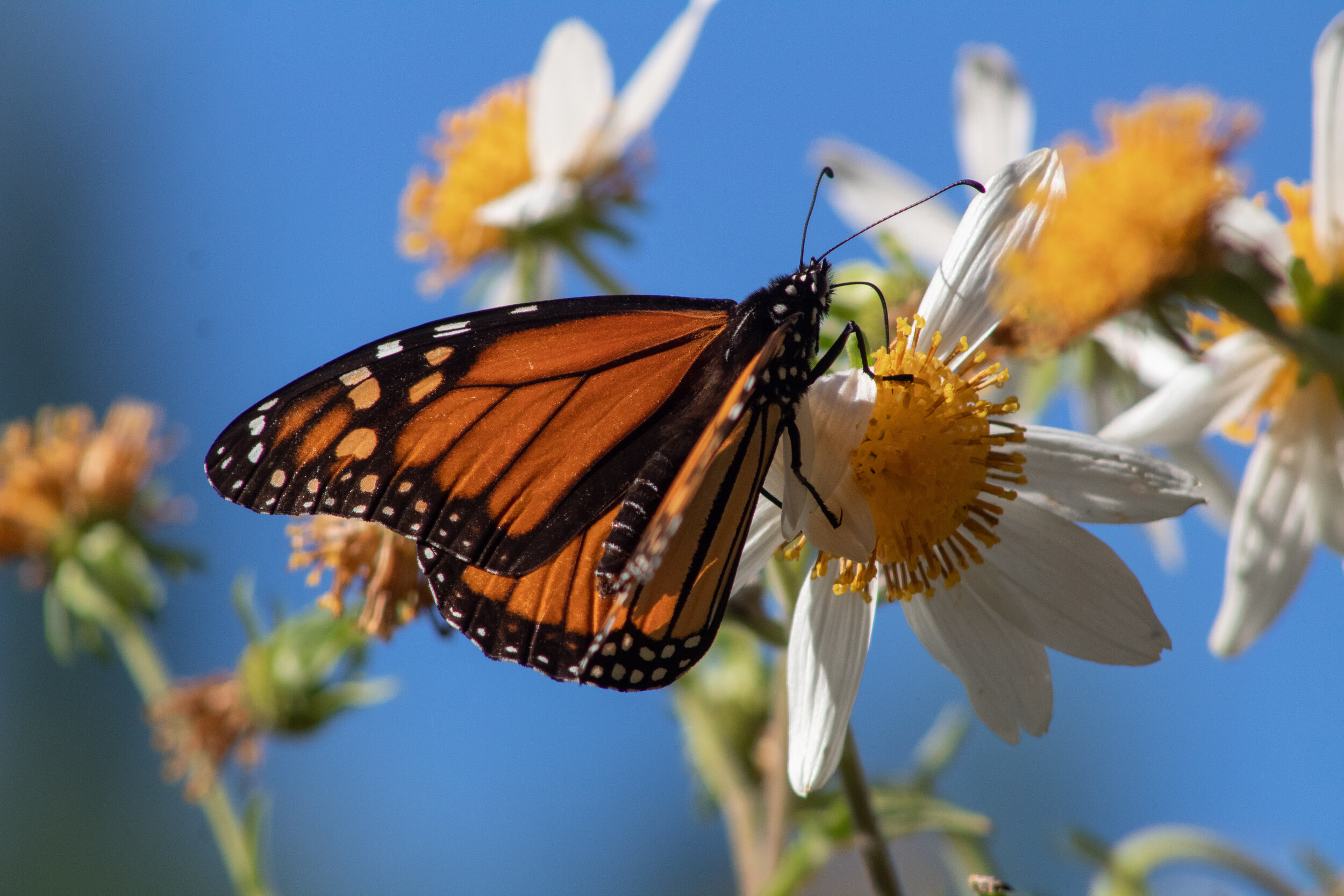
Monarch butterfly populations in Califnornia have dwindled from 4.5 million to 1900
Plant Milkweed and pollinator flowers now
The issue
The Xerces Society announced that the number of monarch butterflies overwintering in California remains at critical levels for the second year. The monarch population during the 2018–19 winter was an all-time low.
The total number of monarchs counted this year was 29,418. Although this is 2,200 more than last year, it comes as a result of greater survey effort, with volunteers visiting more sites. There is no meaningful difference between the western monarch population this year and last.
In addition, in both years the population has been less than 30,000 butterflies, the threshold below which the migration may collapse.
The reason
By comparison, about 4.5 million monarch butterflies wintered in forested groves along the California coast in the 1980s. Scientists say the butterflies are at critically low levels in the Western US due to the destruction of their milkweed habitat along their migratory route as housing expands into their territory and use of pesticides and herbicides increases.
Researchers also have noted the effect of climate change. Along with farming, climate change is one of the main drivers of the monarch’s threatened extinction, disrupting an annual 3,000-mile migration synced to springtime and the blossoming of wildflowers.
The solution
The most important part of monarch conservation in the West is to identify, protect, and appropriately manage existing high-quality monarch habitat. This habitat consists of native milkweeds to provide both food for caterpillars and nectar for adults, as well as other flowers—preferably native—that also provide nectar for adults.
These areas are also safe from pesticides and safeguard butterflies against high levels of pathogens. Additional factors such as roosting habitat and shade may also be important, but less is known about these features.
The fellowship
The monarch fellowship intends to work on a with neighborhoods, schools cities, parks, wineries, farms and other land owners to plant milkweed and pollinator flowers that bring monarchs and other butterflies. We want to build a team of participants, partners and a ginormous community that craves to make an environmental impact locally and statewide. It starts with a human connection and grows from eye to eye and face to face meetings in a common space of wanting to transform the world around us to a more harmonious state.

